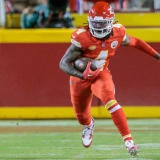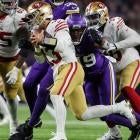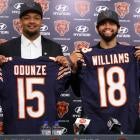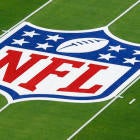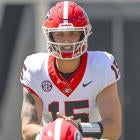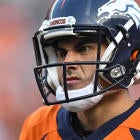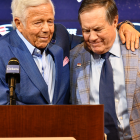
Violence is an irremovable component of football, meaning head trauma and concussions are part of the risk when any player at any level of the game decides to play ball.
No player in the NFL of late suffered concussions at a scarier rate than Miami Dolphins quarterback Tua Tagovailoa, who suffered three last season. In Week 3 versus the Bills, he fell to the ground by himself. In Week 4 at the Bengals on "Thursday Night Football", Tagovailoa took a violent sack and needed to be taken out of the game on a stretcher. The quarterback suffered another one in a Week 16 home loss on Christmas Day to the Green Bay Packers despite playing the entire game, which caused him to miss the rest of their 2022 season.
After Tagovailoa's scary run of head trauma in 2022, one would think other NFL players would be hesitant to return to play the following week after suffering a concussion However, players in 2023 are doing just that.
Pittsburgh Steelers Pro Bowl and All-Pro defensive tackle Cameron Heyward is returning to action in Week 16 against the Cincinnati Bengals on Saturday after suffering a concussion in a Week 15 loss to the Indianapolis Colts. The team did confirm he was cleared by an independent neurologist. NFL MVP betting favorite Brock Purdy was also cleared within a week of suffering a concussion in Week 7 at the Minnesota Vikings, starting in Week 8 against the Bengals.
The median return from a concussion is nine days, a league source told CBS Sports lead NFL insider Jonathan Jones in late October. However, per Jones, roughly a quarter to a third of players who suffer a concussion return the following week as of the end of October. More than a dozen players have gotten out of protocol in one week this season, a source told Jones about a couple months ago, and that number appears to be rising.
A concussion check isn't required for every hit to the helmet, and that alone isn't enough to force a review with a player. The player must either clearly show or admit to having symptoms, or a doctor or spotter must initiate the protocol.
"The NFL/NFLPA concussion protocol relies on independent doctors and trainers who are experts in diagnosing and treating concussions," the league said in a statement provided to Jones. "The experts watch for signs and symptoms of a concussion in a player's behavior following head contact which would necessitate further evaluation. Players, teammates, coaches and officials also contribute to identifying players in need of an examination.
"Three to four concussion evaluations are performed for each diagnosed concussion. This conservative approach safeguards player health. Occasionally symptoms develop on a delayed basis, so care following a game and the subsequent days is a part of the protocol as well."
The NFL currently has a five-step process for players to pass through concussion protocol and return to the field, and according to a league document acquired by Jones, Phase 4 involves club-based non-contact training drills.
"The player continues cardiovascular, strength and balance training, team-based sports-specific exercise, and participates in non-contact football activities (e.g. throwing, catching, running, and other position-specific activities)," the protocol states. "Neurocognitive and balance testing should be completed no later than the end of Phase Four with the results interpreted as back to baseline."
Some teams are playing the protocol more conservatively than others. Houston Texans No. 2 pick C.J. Stroud, the heavy favorite for NFL Offensive Rookie of the Year, missed Week 15 at the Tennessee Titans after suffering a concussion in Week 14 at the New York Jets. He didn't practice Wednesday this week, making it possible he will miss consecutive games to recover.
While the NFL continues to become more and more uniform on the field schematically on both sides of the ball, the league remains divided when it comes to how its teams handle their concussion protocol.









